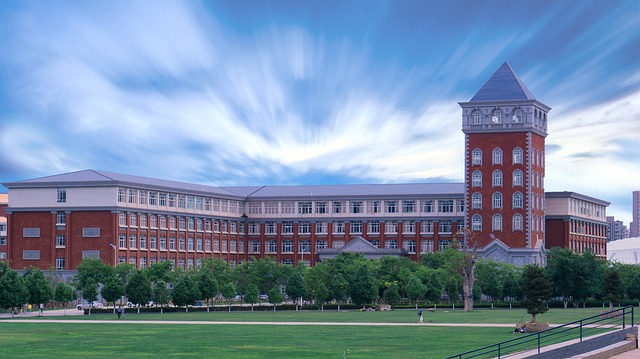Eugene, OR, boasts a rich history intertwined with its Native American heritage, pioneer past, and academic excellence from the University of Oregon (established 1873). Founded in the mid-19th century, the city transformed from a small settlement to a vibrant metropolis via strategic transportation networks. The university catalyzed cultural evolution, diversifying the community and fostering arts, literature, and intellectual discourse. Historical landmarks like Old Town and iconic university buildings commemorate Eugene's journey, blending its founding heritage with modern urban growth. Today, Eugene is known for its accessible gateway location, rich culture, and well-connected transportation infrastructure.
Discover the captivating journey of Eugene, Oregon, as we explore its significant historical events that have shaped this vibrant city. From its humble beginnings as a Native American settlement to its transformation into a bustling metropolis, Eugene’s story is one of growth and change. We delve into the founding history, highlighting the transition from a peaceful village to a pioneer town. The University of Oregon played a pivotal role in fostering intellectual and cultural growth, while urban development has transformed the cityscape. Explore the diverse community’s cultural evolution and uncover how transportation links have connected Eugene globally. Additionally, we’ll showcase the preservation of historical landmarks that stand as testaments to the city’s rich past.
- Eugene Founding History: From Native American Settlement to Pioneer Town
- The University of Oregon: A Catalyst for Intellectual and Cultural Growth in Eugene
- Urban Development in Eugene: From Small Village to Vibrant City
- Cultural Evolution in Eugene: Shaping a Diverse and Creative Community
- Transportation History: How Eugene Became Connected to the World
- Historical Landmarks in Eugene: Preserving the Past for Future Generations
Eugene Founding History: From Native American Settlement to Pioneer Town

Eugene’s rich history begins with its Native American roots, where various tribes, including the Kalapuya and Yakama, had established settlements along the Willamette River for centuries. These early communities shaped the region’s cultural landscape and left behind a legacy of knowledge and traditions. As European settlers arrived in the mid-19th century, Eugene transformed into a bustling pioneer town, fueled by the Oregon Trail and the promise of fertile land. The city’s growth was further catalyzed by the establishment of the University of Oregon in 1873, which brought intellectual prowess and cultural diversity.
The University played a pivotal role in Eugene’s urban development, fostering academic and artistic communities that left indelible marks on the city’s identity. Over time, Eugene evolved from a small agricultural hub to a vibrant metropolis with a thriving transportation network, including rail lines and highways, connecting it to the broader Pacific Northwest region. Today, its historical landmarks, such as the Old Town and the iconic University buildings, stand as testaments to this unique blend of Native American heritage, pioneer spirit, academic excellence, and cultural evolution that defines Eugene’s founding history.
The University of Oregon: A Catalyst for Intellectual and Cultural Growth in Eugene

The establishment of the University of Oregon in 1873 played a pivotal role in shaping Eugene’s intellectual and cultural landscape. As one of the state’s earliest institutions of higher learning, it attracted scholars and students from across the region, contributing to the city’s rapid growth and diversification. The university’s presence spurred urban development, with the expansion of housing, commercial spaces, and public infrastructure to accommodate its expanding community. This academic hub became a catalyst for Eugene’s cultural evolution, fostering an environment that nurtured arts, literature, and intellectual discourse.
Over time, the University of Oregon has left its mark on Eugene’s historical landmarks. From iconic buildings that stand as testaments to architectural styles of the era, to museums that showcase the region’s rich history and cultural heritage, the university’s influence is woven into the very fabric of the city. Furthermore, its role in transportation history cannot be understated; it contributed to the development of efficient mobility networks, enabling easier access to education, employment, and recreational opportunities, which are integral parts of Eugene’s urban development narrative.
Urban Development in Eugene: From Small Village to Vibrant City

Eugene’s transformation from a small village to a vibrant city is a testament to its rich history and dynamic urban development. The founding of Eugene dates back to the mid-19th century, when settlers arrived in the area, attracted by its lush landscapes and potential for agriculture. As the population grew, so did the need for infrastructure and institutions. The establishment of the University of Oregon in 1873 played a pivotal role in shaping the city’s cultural evolution and economic growth. The university brought intellectual vibrancy and a steady stream of students, fostering an environment that encouraged artistic expression, academic pursuits, and community engagement.
Over time, Eugene’s urban development took on its own unique character. The construction of historic buildings, such as the Lawrence Hall and the Autzen Stadium, became iconic landmarks that defined the city’s skyline. The evolution of transportation systems, from horse-drawn carriages to modern highways and public transit, facilitated connectivity within the city and with surrounding regions. This progress was further boosted by strategic urban planning efforts that prioritized walkability, cycling paths, and green spaces, reflecting a commitment to sustainable development. Eugene’s cultural landscape has also expanded through diverse art galleries, museums, and performance venues, showcasing its rich heritage and fostering a thriving arts scene.
Cultural Evolution in Eugene: Shaping a Diverse and Creative Community

Eugene’s rich history is a tapestry woven with threads of cultural evolution, shaped by its founding heritage and influenced by prominent institutions like the University of Oregon. Since its early days, the city has embraced diversity and creativity, becoming a hub for artists, intellectuals, and innovators. The University played a pivotal role in fostering this environment by bringing together people from various backgrounds, contributing to Eugene’s vibrant cultural scene. This academic and artistic fusion fueled the city’s urban development, transforming it into a dynamic metropolis.
Eugene’s urban landscape is dotted with historical landmarks that tell tales of its past. From its humble beginnings as a railroad stop to becoming a thriving university town, each era left its mark. The city’s transportation history is evident in its well-connected network, facilitating trade and communication. As Eugene continued to grow, its cultural evolution gained momentum, attracting artists, musicians, and writers who found inspiration in the city’s unique blend of natural beauty and intellectual vibrancy. These factors collectively contribute to Eugene’s identity as a culturally diverse and creatively driven community.
Transportation History: How Eugene Became Connected to the World

Eugene’s rich history is deeply intertwined with its transportation landscape, which has played a pivotal role in shaping the city’s identity over the years. Since its founding, Eugene has evolved from a small settlement to a vibrant urban center, largely due to its strategic location and access to transportation networks. The University of Oregon, a cornerstone institution since 1873, had a significant impact on fostering academic growth and attracting diverse communities, contributing to the city’s cultural evolution.
The development of Eugene’s transportation infrastructure is a testament to its adaptability and forward-thinking nature. From early days reliant on horse-drawn carriages and railroads, the city embraced the advent of automobiles, eventually becoming a hub for both passenger and freight services. These advancements facilitated trade, tourism, and migration, transforming Eugene into an accessible gateway to the Pacific Northwest. Historical landmarks like the Old Town and historic bridges along the Willamette River reflect this ongoing urban development and transportation revolution.
Historical Landmarks in Eugene: Preserving the Past for Future Generations

Eugene, with a rich history dating back to its founding in the mid-19th century, boasts an array of historical landmarks that preserve the city’s past for future generations. The University of Oregon, established in 1873, has played a pivotal role in shaping Eugene’s intellectual and cultural evolution. Its campus, surrounded by scenic landscapes, is not just an educational hub but also a significant urban development milestone.
Beyond academia, Eugene’s historical landmarks encompass diverse aspects, including its transportation history. The city’s central location on major thoroughfares facilitated growth, while iconic structures like the Old Capitol Museum stand as reminders of its foundational era. These landmarks reflect Eugene’s cultural diversity and vibrant history, inviting residents and visitors alike to explore and appreciate the city’s evolving tapestry.
